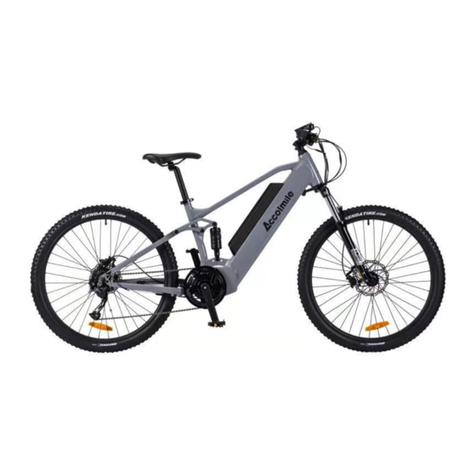
2 Caring for your Accolmile bike and pre-use checks.........................................................................3
2.1 Before you set off for the first time.........................................................................................4
2.2 Before each use....................................................................................................................... 5
2.3 Battery care..............................................................................................................................6
2.4 Recharging your battery.......................................................................................................... 7
2.5 Waterproof.............................................................................................................................. 7
2.6 Maintenance and adjustments................................................................................................8
2.7 Technical specifications & performance..................................................................................9
2.8 Simple Trouble shooting........................................................................................................10
3 Controls and equipment................................................................................................................10
3.1 Battery on/off switch and lock.............................................................................................. 10
3.2 The ON/OFF button and Light button................................................................................... 11
3.3 Pedal assist power................................................................................................................. 12
3.4 Battery capacity meter, riding style and affect on range......................................................12
3.5 Brakes.....................................................................................................................................13
3.6 The connectors...................................................................................................................... 14
3.7 Quick release saddle height adjustment............................................................................... 14
3.8 Rims and spokes.................................................................................................................... 14
3.9 Chain and drive wheel removal............................................................................................. 15
3.10 Derailleur and gear change....................................................................................................15
4 Warranty, battery maintenance and user responsibilities............................................................16
4.1 Battery maintenance and user responsibilities.....................................................................16
5 Extra recommendations and warnings........................................................................................... 18
6 Service............................................................................................................................................. 19
7 Pre Delivery Inspection check list....................................................................................................21
1 Introduction
Thank you for choosing a Accolmile electric bicycle.
Before you use your Accolmile electric bike it is important that you read this manual carefully. If
there is anything you do not understand completely, please contact us.




























